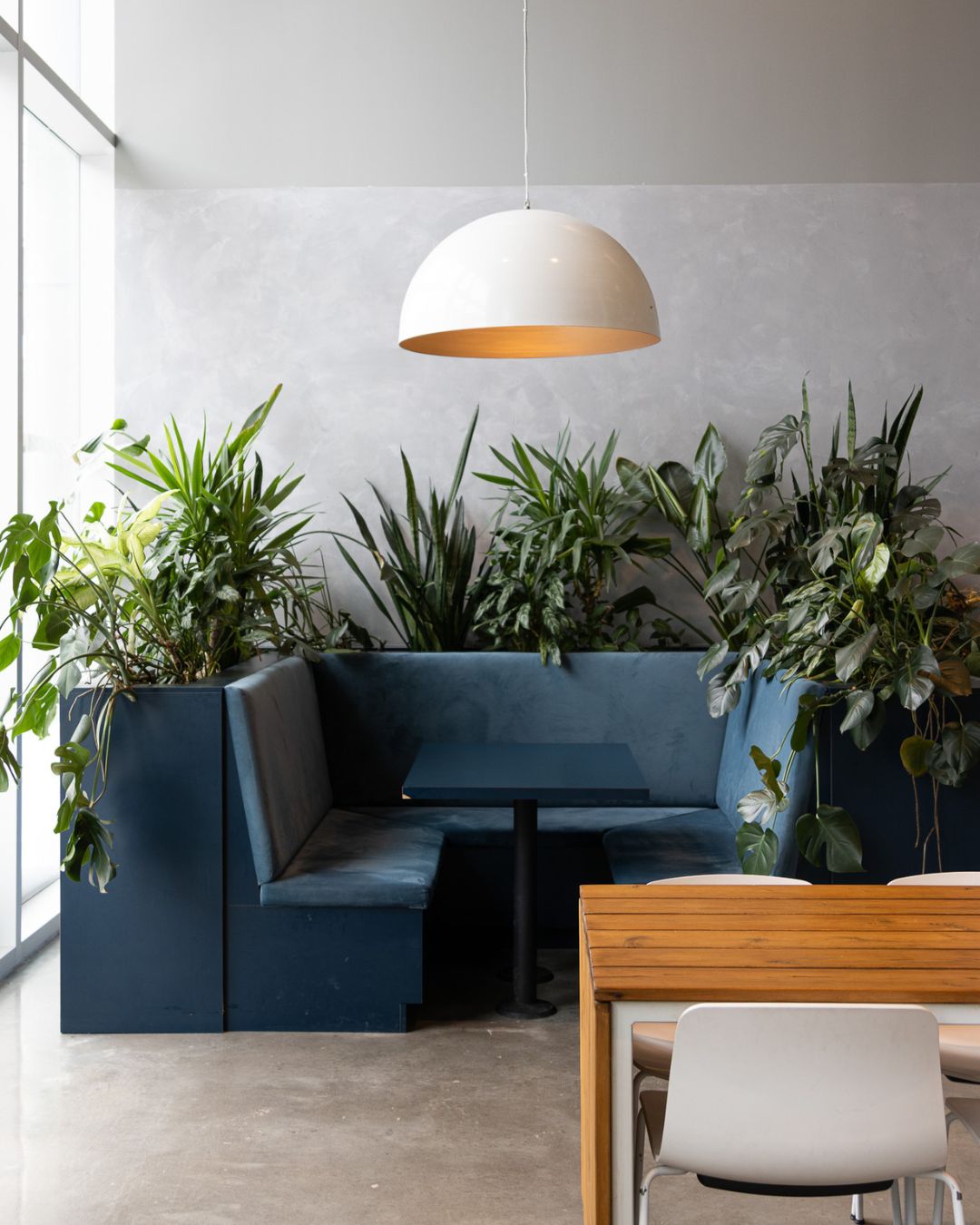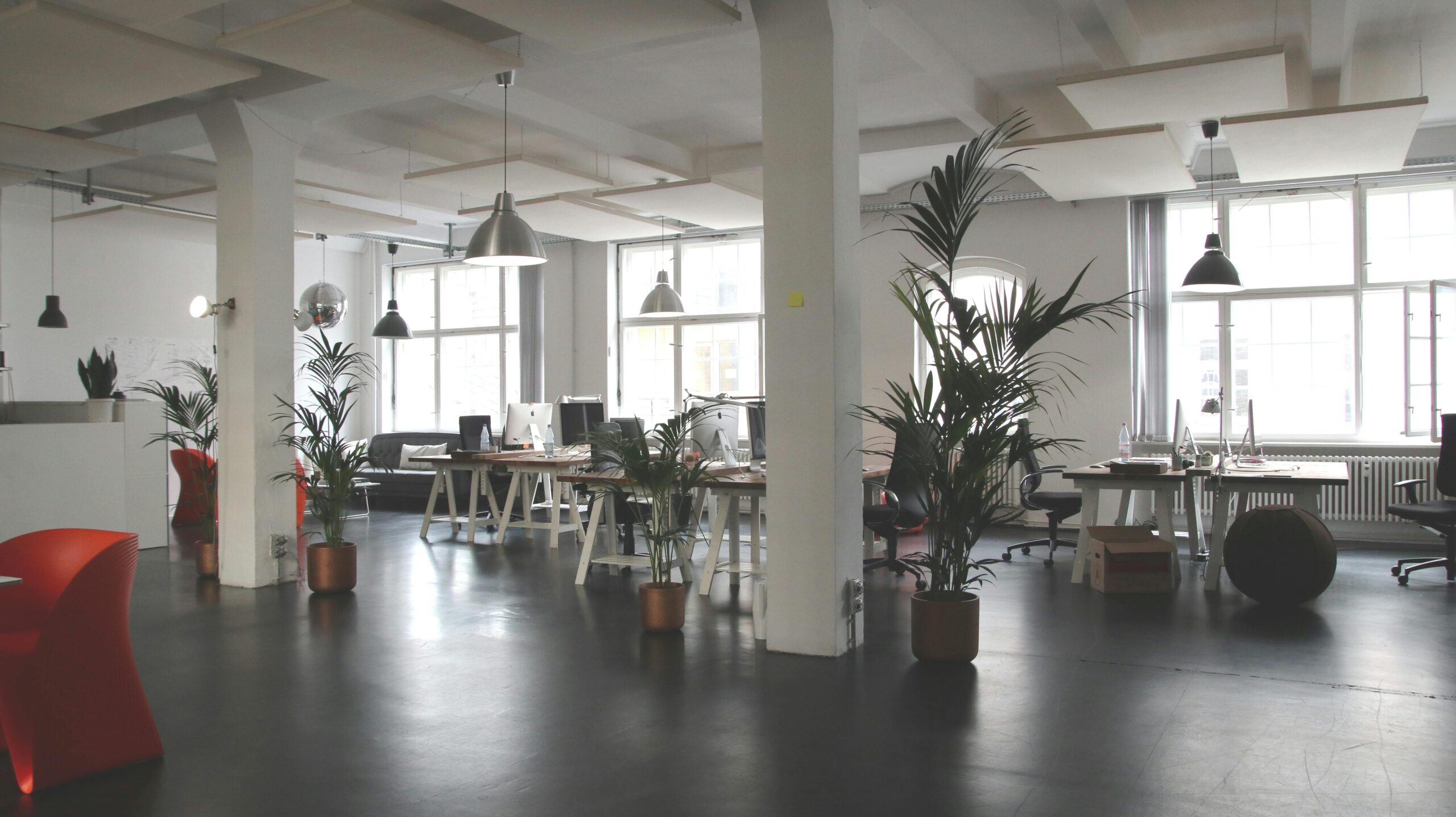In today’s working world, professional environments are no longer limited to simple functional offices. Companies are seeking to create spaces that stimulate creativity, promote collaboration, and improve team well-being. Among the growing trends, biophilic design stands out for its ability to bring employees closer to nature, even in the heart of cities.
The concept of biophilia, literally “love of life and living things,” is based on the idea that humans have an innate connection to nature and that integrating it into their everyday environment has beneficial effects. In the workplace, biophilic design is not limited to placing plants in offices. It encompasses natural light, organic materials, shapes and patterns inspired by nature, as well as spaces that allow employees to reconnect with their natural environment.
This article explores the concrete impact of biophilic design on productivity and well-being at work, and how spaces such as Espaces Waverly incorporate it to offer a more enriching professional experience.
What is biophilic design?
Biophilic design is an architectural and planning approach that seeks to integrate nature into built spaces. This can be achieved through a variety of elements:
-
Natural light and outdoor views
-
Plants and green walls
-
The use of natural materials such as wood, stone, or bamboo
-
Shapes, patterns, and textures inspired by nature
-
Spaces for relaxation and contemplation
The goal is not simply aesthetic. Research in environmental psychology shows that the presence of nature positively influences mood, concentration, creativity, and even physical health. In an office setting, these effects can translate into improved productivity, less stress, and increased employee engagement.
Natural light: a key factor in well-being
Natural light is one of the most powerful elements of biophilic design. It has a direct impact on people’s circadian rhythms, sleep, mood, and energy levels. Offices with sufficient natural lighting allow employees to stay more focused and alert throughout the day.
According to several studies, employees exposed to natural light report:
-
Better sleep quality
-
A reduction in symptoms of fatigue and stress
-
Improved mood and motivation
In spaces such as Espaces Waverly, large windows and thoughtful design ensure that natural light penetrates deep into the offices, creating a bright and stimulating environment. Even meeting areas and common spaces are designed to maximize exposure to light, contributing to a more pleasant overall environment.
Plants and green walls: more than just decoration
The integration of vegetation into workspaces is another pillar of biophilic design. Plants are not only aesthetically pleasing; they influence well-being and performance in several ways:
-
They improve air quality by reducing levels of carbon dioxide and pollutants.
-
They reduce stress and promote a sense of calm and serenity.
-
They increase productivity, with some studies showing a 15% to 20% improvement in performance on certain tasks.
Green walls and green installations in offices also offer social benefits. They create natural meeting areas and encourage informal collaboration. These elements can be seen in several Waverly spaces, where green walls in lobbies and common areas contribute to a welcoming and lively atmosphere.
Natural materials and textures
The use of natural materials, such as wood, stone, or textured concrete, is another way to incorporate biophilic design. These materials bring warmth and a sensory dimension to workspaces, offering a more pleasant experience than offices made entirely of glass and metal.
Visual and tactile contact with natural materials can:
-
Promote concentration and creativity
-
Reduce mental fatigue
-
Create a more comfortable atmosphere conducive to engagement
Espaces Waverly uses these materials in its offices, private lofts, and common areas, creating a work environment where every detail is designed to enhance the employee experience.
Shapes and patterns inspired by nature
Biophilic design is not limited to physical elements; it also includes shapes and patterns inspired by nature. Organic curves, fractal patterns, and natural textures incorporated into furniture, wall coverings, or flooring allow the brain to perceive a more harmonious environment.
These shapes and patterns subtly influence well-being by reducing visual stress and stimulating creativity. Environments that avoid overly rigid lines and overly uniform spaces help employees feel more relaxed and inspired.
Break areas and connection to nature
Biophilic design goes beyond simple decoration: it creates spaces where employees can reconnect with nature. These break areas are essential for reducing stress and boosting productivity. They can take the form of terraces, patios, indoor gardens, or even quiet areas with plants and water features.
Breaks in these natural environments allow employees to recharge, reduce mental tension, and return to their tasks with greater focus and energy. Espaces Waverly has incorporated these principles into its panoramic terraces and common areas, providing a setting where it is possible to relax while remaining connected to the office.
Impact on productivity
Biophilic design is not limited to emotional well-being or health; it has a tangible impact on work performance. Studies show that employees who work in biophilic environments:
-
Complete their tasks more quickly
-
Make fewer mistakes
-
Demonstrate greater creativity and problem-solving skills
-
Are more committed and motivated
A biophilic office reduces mental fatigue and promotes better attention. Natural elements, light, and vegetation help the brain stay alert and process information more efficiently.
Stress reduction and improved health
Chronic stress is one of the main factors contributing to burnout and decreased productivity. Biophilic environments help reduce levels of cortisol, the stress hormone, thanks to the presence of vegetation, natural light, and organic materials.
Health benefits include:
-
Reduction in headaches and eye strain
-
Improved sleep and circadian rhythm
-
Reduced anxiety and improved resilience in the face of workplace pressures
By creating an environment where employees feel better, companies benefit from reduced absenteeism and improved talent retention.
Collaboration and creativity
Biophilic design also promotes collaboration and creativity. Open yet flexible spaces, relaxation areas, and natural elements encourage informal meetings and spontaneous exchanges between colleagues.
The combination of natural light, plants, and organic materials creates an atmosphere conducive to the emergence of new ideas. Employees feel more relaxed, more connected to their environment, and more inclined to collaborate productively.
Waverly Spaces and Biophilic Design
Espaces Waverly perfectly illustrates the integration of biophilic design in a professional setting. The offices are designed to maximize natural light, offer views of the outdoors, and incorporate natural elements into each space.
Common areas, private lofts, and event spaces incorporate plants, organic materials, and nature-inspired shapes. Rooftop terraces allow employees and visitors to reconnect with the urban environment while enjoying direct contact with nature.
This approach creates a balance between functionality and well-being, providing companies with an environment where it is possible to work, collaborate, and recharge in the best possible conditions.
Conclusion
Biophilic design transforms the workplace into a space where productivity and well-being reinforce each other. By bringing employees closer to nature, it reduces stress, improves concentration, stimulates creativity, and promotes physical and mental health.
Modern offices can no longer be limited to their utilitarian function. They must offer a complete experience, where the layout and environment support efficiency while enriching professional life.
Espaces Waverly shows how biophilic design can be integrated consistently and effectively into a professional space, creating a pleasant, stimulating, and balanced workplace. For companies that want to combine performance and well-being, investing in a nature-inspired environment is no longer a choice, but a winning strategy.


